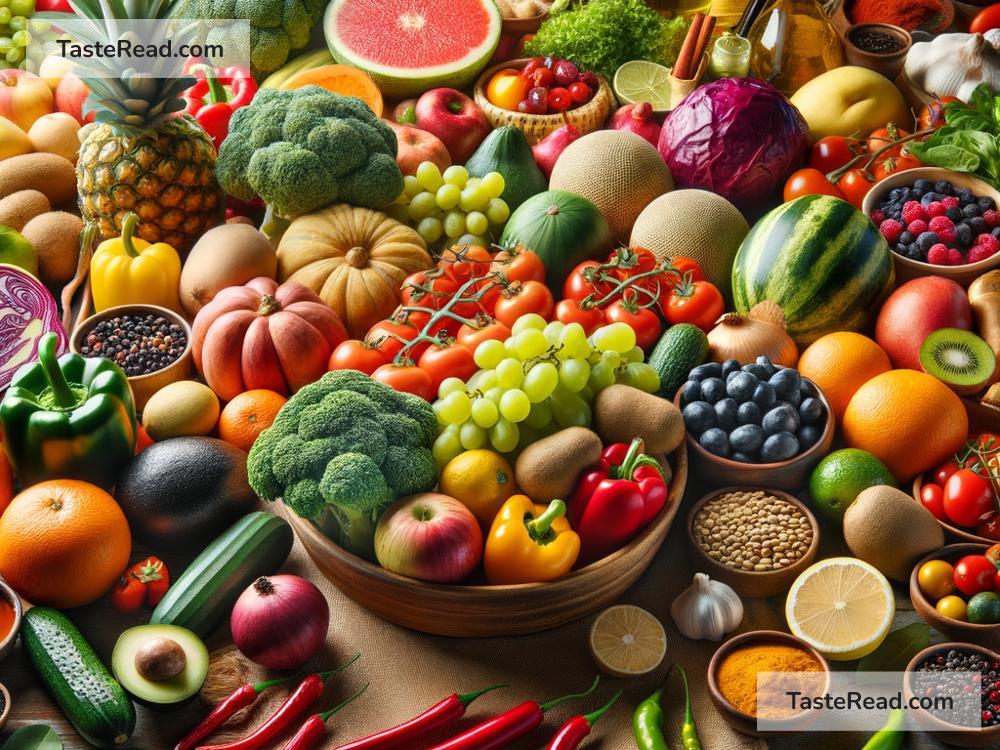The Evolution of Taste Preferences for Fruits and Vegetables Across Cultures
Fruits and vegetables have been a crucial part of human diets for thousands of years. They not only provide essential nutrients but also bring a wide range of flavors to meals. Throughout history, the way different cultures value, grow, and consume fruits and vegetables has been shaped by geography, climate, tradition, and trade. Over time, people’s taste preferences have evolved based on availability, preparation methods, and even societal influences. Let’s explore how these preferences have changed across various cultures and why fruits and vegetables are celebrated in such diverse ways.
Nature’s Pantry: The Role of Geography
A major factor in shaping taste preferences is geography. Different regions grow different crops based on their climate and soil. For example, tropical countries like India, Thailand, and Brazil have access to fruits such as mangoes, bananas, and coconuts all year. These tropical fruits are sweet and aromatic, which is why many people from hot climates enjoy rich, sweet flavors. On the other hand, colder regions like Scandinavia and Russia focus on root vegetables like potatoes, carrots, and beets because they can survive harsh winters and store well.
Geography also influences how adventurous people become with flavors. In Mediterranean countries like Italy and Greece, where olive trees thrive, olives became popular despite their bitter taste. Over time, these nations developed ways to cure and season olives, making them a beloved ingredient in dishes.
Tradition and Culture: Recipes Passed Down
Food traditions play a big role in shaping how a culture enjoys fruits and vegetables. In Asia, for example, fresh vegetables are often stir-fried or steamed, keeping their crunch and natural flavors intact. Vegetables like bok choy, bamboo shoots, and water spinach are staples in Chinese and Southeast Asian cooking, where balance between flavors—sweet, sour, salty, and spicy—is preferred.
In contrast, European cultures often roast, bake, or boil vegetables for rich, comforting dishes. Potatoes, carrots, and squash take on earthy, hearty flavors in recipes like stews and casseroles. These cooking techniques influence taste preferences because they bring out sweetness and softness in vegetables that might otherwise taste plain.
In African cuisines, ingredients like yams, okra, and plantains are commonly used, reflecting preferences for starchy and filling foods. Many African dishes mix fruits and vegetables with spices and oils to create bold flavors that pack a punch. These recipes have been handed down for generations, making them a core part of cultural identity.
Trade and Discovery: New Flavors Around the World
Another key factor in evolving taste preferences is trade. Before global trade began, people ate only what was grown locally. But as merchants started traveling between continents, they brought along fruits and vegetables to share with other cultures.
For example, tomatoes, originally grown in Central and South America, were introduced to Europe in the 1500s. Over time, tomatoes became a staple in Italian cooking, where they are turned into pasta sauces, soups, and pizzas. Similarly, chillies, also native to the Americas, were adopted by Indian and Thai cuisines, leading to their spicy flavors.
The exchange of fruits and vegetables also led to new hybrids and varieties. Farmers experimented with cross-breeding, creating sweeter fruits, colorful vegetables, and longer-lasting produce that appealed to changing consumer tastes. Today, we enjoy seedless watermelons, purple carrots, and a wide range of exotic fruits that wouldn’t have existed naturally.
Lifestyle Changes: Health and Convenience
In modern times, people’s taste preferences for fruits and vegetables have shifted due to lifestyle changes. As science has uncovered the health benefits of eating fresh produce, people are now drawn to foods like kale, broccoli, and avocados for their nutritional value. Superfoods have gained popularity across the globe, with many cultures adapting their traditional dishes to include healthier choices.
Convenience also plays a role in shaping preferences. Frozen vegetables, pre-cut fruits, and packaged salads are preferred in busy urban areas, making it easier for people to make healthy choices without spending too much time in the kitchen. Fresh, whole produce is still celebrated, but convenience has opened up new ways for people to enjoy them.
Global Connections: A Blend of Cultures
Thanks to globalization, people today are exposed to foods and cooking techniques from all around the world. For example, sushi rolls filled with avocado have become popular outside Japan, while smoothies made with tropical fruits like dragon fruit and mango are enjoyed in countries far from the tropics. Fusion cuisine has brought together unique flavors, blending traditional ingredients from different cultures and expanding taste preferences globally.
Social media and food trends also influence how people view fruits and vegetables. Instagram-worthy salads, smoothie bowls, and colorful “rainbow meals” have made fresh produce exciting again for younger generations. Rather than relying on tradition alone, people now embrace creativity and aesthetics in their meals.
Conclusion: A Shared Love for Nature’s Treasures
Though cultures may approach fruits and vegetables differently, we all share a love for their variety, flavor, and nourishment. Over centuries, geography, tradition, trade, and modern lifestyles have changed how we view and consume these foods. Taste preferences continue to evolve with each new discovery, but fruits and vegetables remain an essential part of connecting us to the Earth and to one another.
As people grow more adventurous and health-conscious, the appreciation for fruits and vegetables will only deepen, carrying forward cultural legacies while exploring exciting new possibilities. Nature’s treasure trove has always been there—we’re just discovering new ways to enjoy it.


